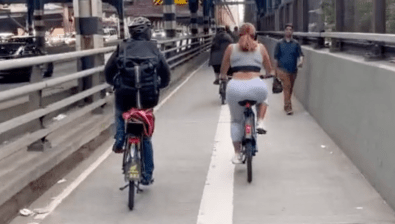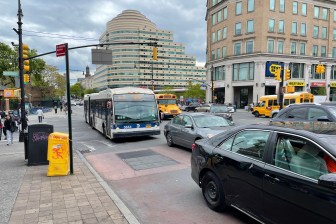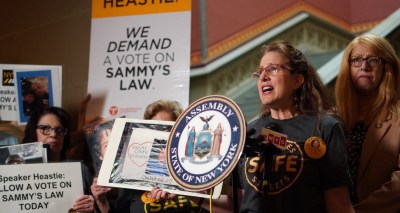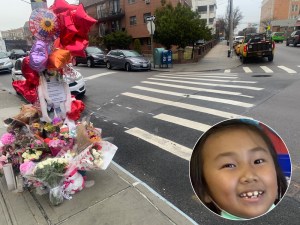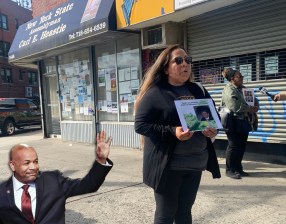Urban Design Forum Envisions Street-Based ‘Platform’ for a ‘Thriving City’
Urban Design Forum issues a document that is part policy paper, part manifesto. Paging Mayor Adams!
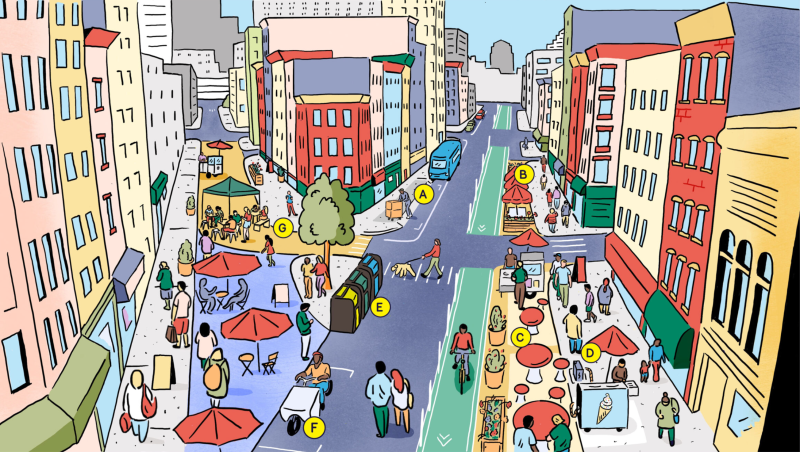
The urban planners, architects, officials and “placemakers” who make up the livable-streets movement just handed Mayor Adams a handbook for how to run a crucial part of any city administration.
That handbook — a people-fist blueprint for a new municipal focus on the public realm — comes in the form of “Streets Ahead: Five Routes to a Thriving City” from the Urban Design Forum — a forum for civic leaders, planning professionals and advocates.
Focusing on how streets can contribute to five areas of city life — “commerce, culture, climate, care and continuity” — “Streets Ahead” articulates goals that won’t be controversial for Streetsblog readers but may sound new to New Yorkers who think of streets only as repositories for free car storage.
It posits that:
- Streets can help revitalize our city’s small business community and support economic recovery.
- Streets can enable cultural expression and creative activation.
- Streets can help New York City confront the climate crisis.
- Streets can center safety, care, and healing for New Yorkers of all ages, races, and abilities.
- Streets can build connected communities.
Within each rubric, it then supplies policy recommendations, such as:
- Activate micro-distribution centers in each borough.
- Expand and equip underinvested business improvement districts and community-based maintenance partners.Co-site street safety and permanent cultural infrastructure.
- Install energy generating technologies in the right of way.
- Invest in waste containerization.
Some suggestions overlap with Adams’s “Blueprint for NYC Economic Recovery,” which included a new “Interagency Task Force for the Public Realm.”
But the Urban Design Forum platform, the culmination of a year of field studies, local dialogues, and international exchanges, is goes further, seeking to transform the city’s streets and neighborhoods while responding to its climate, health and political crises. In this, it joins works as disparate as the “vision plans” of various business improvement districts, with their heavy emphasis on pedestrianization; practical guides, such as the Design Trust’s public space management “toolkit”; and even children’s books, such as “City Streets Are for People.”
Its rhetoric is lofty.
“We are at the beginning of a historic recovery for our city,” the document states. “It is imperative that we seize this moment to end roadway fatalities, equip our streets to combat an escalating climate crisis, and bring our neighborhoods together after a period of deep isolation. The last two years have shown us what is possible with nimble, collaborative work together. We invite you, our elected and appointed officials, to remain fearless and continue this work. … A vision for a safe city is possible to achieve in eight years if we recognize that our Right of Way is an essential piece of the puzzle.”
Jackson Chabot, the director of Public Space Advocacy at Open Plans (a sister organization of Streetsblog) and an Urban Design Forum fellow, said that the document would energize the movement — and inform policy.
“This forward-looking publication centers people, public space, and how we manage public space in a way that is sorely needed,” he said. “Streets and sidewalks are many New Yorkers’ front yards. Open Streets and Open Restaurants have shown us what is possible if we think beyond the movement and storage of vehicles on our streets and we must continue to re-envision our streets. … These steps will help us realize a city where all New Yorkers deserve access to safe, clean, and joyful public spaces and neighborhoods.”
